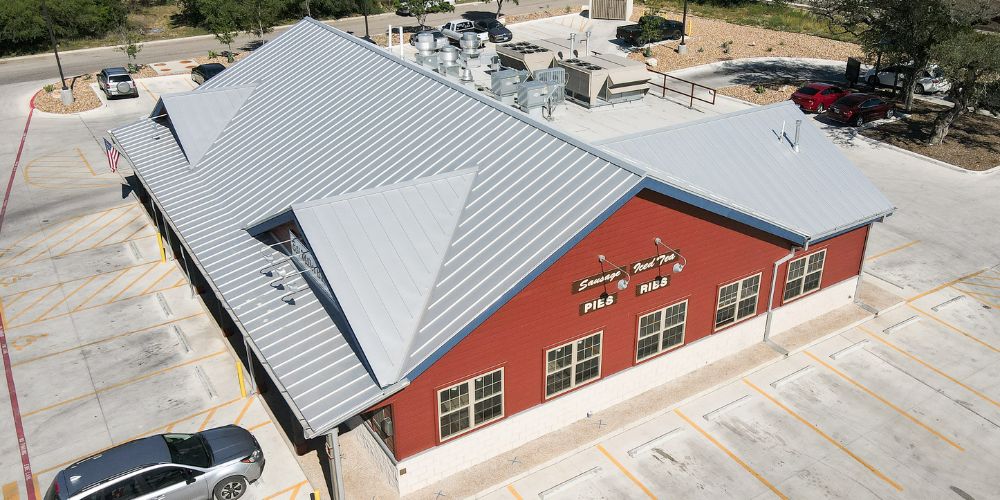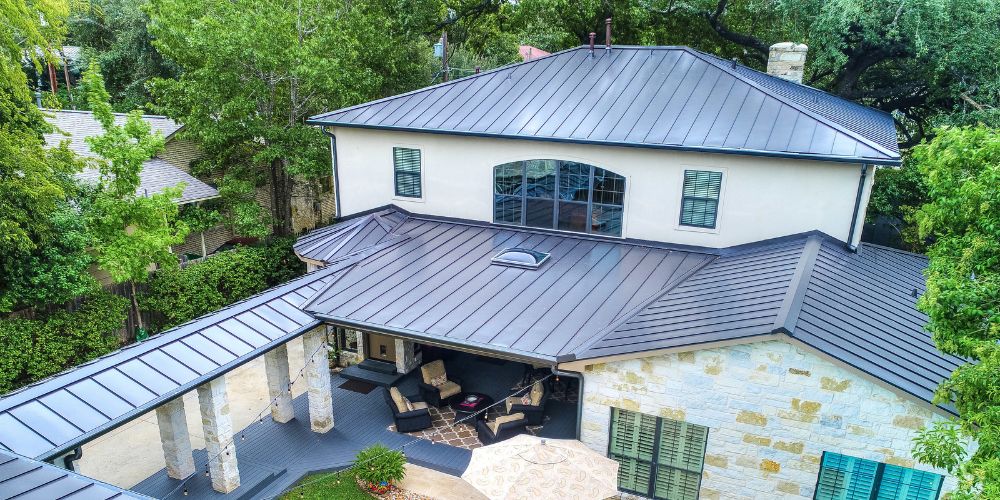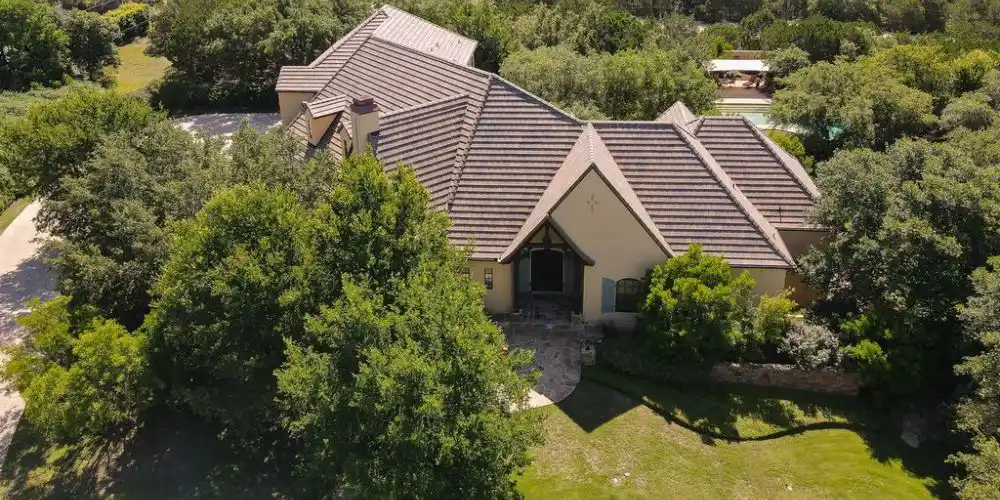Choosing the right metal roof color is essential, not only for enhancing your home’s style but also for boosting its functionality. The numerous choices of colors provide even more reasons why finding the perfect match for your house style, energy needs, and local climate might be challenging. A correctly colored metal roofing contributes to curb appeal, enhances energy efficiency, and completes the home design.
In this guide, we’ll examine the aspects to consider when choosing metal roof colors, the color’s impact on energy efficiency, some popular color options, some maintenance tips that you can use, and how to make the best decision for your roofing needs.
Factors to Consider When Choosing Metal Roof
- Climate Compatibility: Consider your local climate when selecting a metal roof color. Light colors reflect heat, making them ideal for hot climates, while dark colors absorb heat, which is better for colder regions.
- Style of Home: The most probable thing to consider while choosing a color for your home’s roof is the architectural style associated with that home. A crisp, monochromatic color suits a modernly designed home, while a traditional look in a house will fit classic colors.
- Neighborhood Trends: You can select a color that complements the other homes in the neighborhood. Check local trends to ensure your home aesthetically fits in.
- Personal Preference: Ultimately, the color you choose should reflect your taste while complementing your home’s exterior, including siding, trim, and landscaping.
Energy Efficiency and Metal Roof Color
- Solar Reflectivity Index: The Solar Reflectivity Index (SRI) measures how well a metal roof reflects sunlight and releases absorbed heat. Higher SRI values mean cooler interior temperatures, making them ideal for hot climates. SRI scale ranges from 0 to 100. Materials with an SRI closer to 100 are ideal for warm climates because they reduce the building’s cooling load. Conversely, materials with an SRI closer to 0 are better for colder climates, as they absorb more heat.
- Energy Star Certification: The color of metal roofs that meet the standards for Energy Star certification has been proven to reduce energy consumption by reflecting more sunlight. These colors are put in place specifically to meet energy efficiency goals and can be an excellent way to save on cooling costs.
- Color’s Impact on Energy Bills: Your metal roof color can directly impact your energy bills, with lighter shades reducing cooling costs in hot climates and darker tones lowering heating costs in cold regions.
Popular Metal Roof Color Options

Black
- Benefits: It absorbs heat, making it suitable for colder regions, where houses need more heat during winter.
- Considerations: The increased interior temperatures may raise cooling costs in hot areas (SRI: 0-10).
- Best for: White or light-colored homes, modern or minimalist designs.
Dark Brown
- Benefits: Earthy tone that adds a rustic, traditional look to homes; it is heat-absorbing and therefore ideal for cold climates.
- Considerations: Not suitable in hot climates (SRI: 10-20).
- Best for: Beige, cream, or wooden homes.
Charcoal Gray
- Benefits: Versatile, timeless color that exudes sophistication and blends well with modern homes.
- Considerations: It can absorb heat; hence, it’s better for cooler climates (SRI: 15-25).
- Best for: White, light gray, or blue homes.
Light Gray
- Benefits: Promotes reflecting sunlight cooling costs in warm climates. Provides a modern, sleek appearance.
- Considerations: It produces less heat in colder climates (SRI: 40-55).
- Best for: Darker-colored homes, including black or navy blue.
Red
- Benefit: Red is a bold, energetic color that creates a striking visual statement, especially suited for farmhouses or countryside properties.
- Consideration: It may fade in color if its aftercare isn’t considered accordingly (SRI:
- 25-35).
- Best for: White, cream, or wood Venetian homes.
Forest Green
- Benefit: Complement the landscape and provide an excellent earthy visual experience.
- Considerations: Forest Green may not complement modern home designs as well as more neutral or contemporary colors (SRI: 20-30).
- Best for: Beige, cream, or brown homes- usually in rural settings.
Light Green
- Benefit: It reflects sunlight well and is thus energy efficient. It is refreshing with a soft tone.
- Considerations: Can look out of place with bold or dark-colored homes (SRI: 40-50).
- Best for: Light-colored houses, such as white or light beige.
Blue
- Advantages: Original freshness. Suitable for coastal houses.
- Consideration: It fades out faster in highly sunny areas (SRI: 25-35).
- Best for: White, light gray, or tan homes.
Copper
- Benefits: It develops a natural patina over time, giving it a unique look. Very strong.
- Considerations: It carries a significantly higher first cost than painted metals (SRI: 30-35).
- Best for: Stone, brick, or rustic style professionally built homes.
Tan
- Benefits: It is inert and tucks naturally into natural landscapes. It reflects sunlight, making it energy-efficient.
- Considerations: It could be more exciting with the salience (SRI: 45-55).
- Best for: Homes that are green, brown, or wood.
White
- Advantages: It reflects the most sunlight, making it very effective in hot parts of the world. It also gives a clean, modern appearance.
- Consideration: Needs more frequent cleaning to maintain its appearance (SRI: 80-100).
- Best for: Best fit for dark-colored houses in black, navy, or brown colors.
Copper Penny
- Benefits: It has the appearance of copper without much of the associated cost. It adds warmth and sophistication.
- Considerations: This requires certain architectural styles to appear cohesive (SRI: 30-40).
- Best for: Red brick, stone, or brown homes.
Rustic Red
- Benefits: This gives a bold and classic look and can be used in barns or even for rustic architecture.
- Considerations: It tends to fade out if it is not maintained (SRI: 25-35).
- Best for: Cream, beige, or natural-colored wood homes.
Silver
- Benefits: Highly reflective, energy-efficient. Very modern look.
- Considerations: It may appear excessively industrial in some classic home styles (SRI: 60-75).
- Best for: Modern or industrial-style homes.
Metal Roof Color Maintenance
- Periodic Maintenance: Clean the roof occasionally to prevent dirt from building up and to keep the colors of metal roofs fresh.
- Repainting: With most types of metal and finishes, repainting might be necessary every 10-15 years to freshen color.
- Repaint Peeling Areas: Regularly inspect the roof for peeling paint and address any issues promptly to prevent surface damage.
- Select Quality Coatings: Use high-class, UV-resistant paints to increase the paint’s life and reduce its chalking.
Choosing the right metal roof color is more than just a stylistic decision, it’s about optimizing energy efficiency, complementing your home’s architecture, and ensuring long-term durability.
A metal roof has many variable options, from light and reflective colors in hot climates to darker tones offsetting traditional cold-weather colors. For professional advice and quality results, contact Mangold Roofing, San Antonio’s trusted experts in metal roofing solutions.




